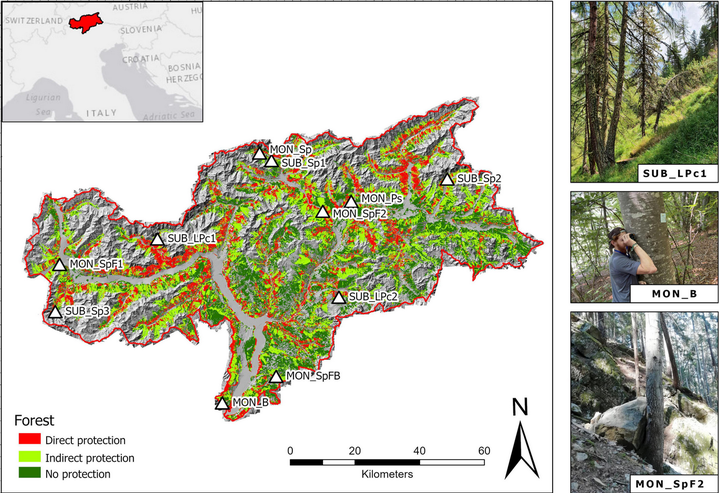Contrasting impacts of climate change on protection forests of the Italian Alps

Abstract
Protection forests play a key role in protecting settlements, people, and infrastructures from gravitational hazards such as rockfalls and avalanches in mountain areas. Rapid climate change is challenging the role of protection forests by altering their dynamics, structure, and composition. Information on local- and regional-scale impacts of climate change on protection forests is critical for planning adaptations in forest management. We used a model of forest dynamics (ForClim) to assess the succession of mountain forests in the Eastern Alps and their protective effects under future climate change scenarios. We investigated eleven representative forest sites along an elevational gradient across multiple locations within an administrative region, covering wide differences in tree species structure, composition, altitude, and exposition. We evaluated protective performance against rockfall and avalanches using numerical indices (i.e., linker functions) quantifying the degree of protection from metrics of simulated forest structure and composition. Our findings reveal that climate warming has a contrasting impact on protective effects in mountain forests of the Eastern Alps. Climate change is likely to not affect negatively all protection forest stands but its impact depends on site and stand conditions. Impacts were highly contingent to the magnitude of climate warming, with increasing criticality under the most severe climate projections. Forests in lower-montane elevations and those located in dry continental valleys showed drastic changes in forest structure and composition due to drought-induced mortality while subalpine forests mostly profited from rising temperatures and a longer vegetation period. Overall, avalanche protection will likely be negatively affected by climate change, while the ability of forests to maintain rockfall protection depends on the severity of expected climate change and their vulnerability due to elevation and topography, with most subalpine forests less prone to loosing protective effects. Proactive measures in management should be taken in the near future to avoid losses of protective effects in the case of severe climate change in the Alps. Given the heterogeneous impact of climate warming, such adaptations can be aided by model-based projections and high local resolution studies to identify forest stand types that might require management priority for maintaining protective effects in the future.